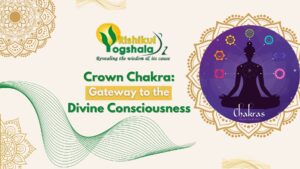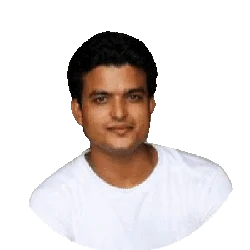In today’s hectic world, sorting through the stress maze has become a common issue. Finding inner calm and quiet has become more critical during the destruction. This is where the great value of meditation and yoga nidra practices lies, as they are like lights in the turbulent waters of contemporary life. Not only can these methods provide comfort, but they also open doors to a deep sense of peace and self-awareness, making them essential resources in the pursuit of overall well-being. Yoga Nidra vs Meditation: Discover how these two practices differ in their approach to achieving deep relaxation and mental clarity.
However, despite their ubiquitous use, myths can obscure our awareness of their subtleties, similarities, and unique advantages. It is, therefore, essential to set out on a quest to discover the minute differences between meditation and yoga nidra to pave the way for a more profound understanding and appreciation of these life-changing techniques. Let’s discuss the difference between meditation and yoga nidra in this blog post.
Recognizing Yoga Nidra

Yoga Nidra, often known as ‘yogic sleep’, is a deeply relaxing method with roots in traditional yoga practices. Though its name suggests otherwise, Yoga Nidra leads practitioners to a level of conscious relaxation that is halfway between consciousness and sleep.
Yoga Nidra is characterized by a systematic rotation of awareness over various body areas, a technique called ‘body scanning’. This procedure encourages deep relaxation and an increased understanding of one’s own body, thoughts, and emotions. By moving through different bodily parts, practitioners experience a deep sense of inner peace and oneness.
Dive Into Meditation
In contrast, meditation is a general phrase that encompasses a wide range of techniques meant to develop self-awareness, attention, and focus. There are many different types of meditation, such as mindfulness and loving-kindness meditation, but the fundamental idea is always the same: developing a careful and focused mind.
In contrast to the controlled guiding of yoga nidra, meditation can be performed in many ways, such as strolling, sitting quietly, or doing dynamic motions like Tai Chi. Whatever the approach, the ultimate goal is to calm the mind, become more aware of oneself and the world, and study thoughts objectively.
Also Read – 7 Health Benefits of Meditation Practice
Yoga Nidra vs Meditation: Unveiling Key Differences (योग निद्रा व ध्यान में अंतर)
Here, we’ll discuss the differences between Yoga Nidra vs Meditation:
1. Resting Versus Sitting
Sitting meditation is the norm for traditional meditation methods, which aim to improve perception, impulse, and our ability to focus attention and consciousness. Yoga Nidra is done by lying down, emphasizing entering altered states where awareness is present, but the body is consciously sleepy. This unique combination enables the person to change from a delicate state of being. This could be the reason, among other things, why research involving college professors found that Yoga Nidra reduced anxiety levels more than typical seated meditation.
2. More In-depth for Beginners
Many professionals who discover that I am both a new and seasoned practitioner of Yoga Nidra will find it suitable since it opens a conduit into levels of meditation fast and effortlessly. Rather than making meditation difficult, Yoga Nidra creates the conditions for meditation to occur by deliberately accessing deeper brainwave states. The practitioner can also readily access these realms utilizing standard seated meditation if they know how to go there.
Also Read – What is Yoga Nidra?
3. Utilization of Intention
Yoga Nidra isn’t just about resting or sleeping in altered states of awareness. Its true purpose is to harness these altered states to bring about profound changes and transformations through the power of intention. With intentions, we can reshape ingrained habits, patterns, beliefs, and behaviors that often resist change. In the long run, the deeper patterns ingrained in the exact core of our consciousness will ultimately succeed over our attempts to alter things exclusively through willpower.
Examining the Similarities
Yoga Nidra and meditation are similar in that they both have underlying principles and the ability to be beneficial despite their distinctions.
- Stress Reduction: It has been demonstrated that both techniques lower stress levels and encourage relaxation, which makes them useful coping mechanisms for the rigors of contemporary living.
- Enhanced Self-Awareness: Mindful observation in meditation or body scanning in Yoga Nidra both promote a better awareness of oneself and one’s inner workings.
- Better Mental Health: Studies indicate that meditation and yoga nidra can both improve mental health, lowering anxiety and depression and enhancing general well-being.
Accepting the Special Benefits:

Although yoga nidra and meditation have similar advantages, they also each have unique benefits that meet the needs and preferences of various people.
Yoga Nidra:
- Deep Relaxation: Yoga Nidra’s guided format makes it very useful for achieving deep levels of relaxation, which makes it a perfect practice for anybody looking to decompress and revitalize.
- Suitable for Novices: Yoga Nidra is a great place to start for people new to meditation practices because of its gentle direction and structured style, making it ideal for people of all fitness levels and experiences.
Practice Meditation:
- Versatility: There are many different techniques and types of meditation, so practitioners can experiment and find a method that suits them. There is something for everyone, whether it is transcendental meditation, loving-kindness, or mindfulness.
- Developing Mental Discipline: Meditation improves concentration and attention, which is a valuable skill that carries over into everyday life and the meditation cushion. The advantages of mental discipline are numerous, ranging from increased creativity to increased productivity.
Yoga nidra and meditation are two separate but related threads in the spiritual practice tapestry that weave together a path of self-discovery and inner development. Their pathways may differ in focus and method, but they ultimately lead to the same place, which is a deep sense of harmony, inner serenity, and oneness with the cosmos.
Also Read: 4 Powerful Meditative Postures for Deep Focus and Relaxation
Whether you prefer the quiet contemplation of meditation or the structured relaxation of yoga nidra, the important thing is to accept differences and respect the individual path that each practice takes you on. Within this union of differences and commonalities, we find the rich tapestry of human experience and the limitless potential for personal development, healing, and awakening.
Conclusion
Regarding the quiet differences between Yoga Nidra vs Meditation, Rishikul Yogshala is the best place, or we can say that it is the best Yoga School in Rishikesh. We provide specialized training that explores the differences and similarities between these two transformative techniques with our extensive curriculum and knowledgeable teachers. Students at Rishikul Yogshala acquire a comprehensive understanding of the tenets, methods, and advantages of Yoga Nidra and Meditation through intensive workshops, perceptive lectures, and hands-on learning.
Our students are given the tools to confidently and clearly traverse their spiritual journey by cultivating discernment, insight, and mastery in their practice, all while being supported in a welcoming and inclusive learning environment. Rishikul Yogshala is, without a doubt, the unquestionable lighthouse of knowledge and enlightenment in Rishikesh for anyone attempting to understand the mysteries of Ayurveda courses in Rishikesh, Yoga Nidra, and Meditation.
Those interested in deepening their yoga journey should consider enrolling in a yoga teacher training program. Rishikul Yogshala Rishikesh, a leading Yoga school in Rishikesh, offers comprehensive courses like the 200 Hour Yoga TTC in Rishikesh, and 300 Hour Yoga Teacher Training in Rishikesh. These programs are designed to help you master your practice and share the transformative power of yoga with others.
Last Modified Date: 18 September 2025















